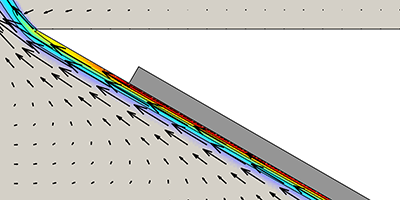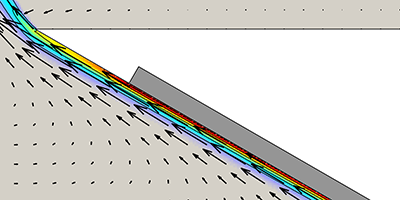Sailing on Convection
Natural convection currents, generated by temperature gradients, are responsible for oceanic and atmospheric circulation. Now researchers have shown that convection generated by heated surfaces can also be “tamed” to propel macroscopic floating objects. The scheme is based on controlling the forces caused by flows at boundary layers—layers of fluid in the vicinity of the object where viscosity plays an important role.
Thomas Peacock at the Massachusetts Institute of Technology, Cambridge, and his collaborators investigated convection-driven propulsion using a triangular wedge floating in a tank of sugar water. The wedge, millimeters long, had a metal heating pad mounted on one of its sloping surfaces. After placing the wedge in the tank, the research team remotely activated a small battery that powered the heating pad. The wedge moved about millimeters in total at a maximum speed of millimeters per second, confirming that natural convection can be controlled to propel macroscopic objects in a given direction, albeit slowly.
The authors, as reported in Physical Review Letters, used theoretical models of boundary-layer convection and drag to model their experiment, deriving equations that predict velocity as a function of heating rate. The agreement with the experimental observations confirmed that the model provides an accurate representation of the system.
The authors used sugar-water mixtures with low characteristic Rayleigh numbers, ensuring the flow was laminar. However, based on previous results, the team suggests that convection in turbulent flows should still be capable of propelling objects. Convection-driven propulsion may be particularly relevant to environmental engineering, where miniaturized devices that inspect and clean fluids can be simply controlled via heating. – Katherine Kornei





